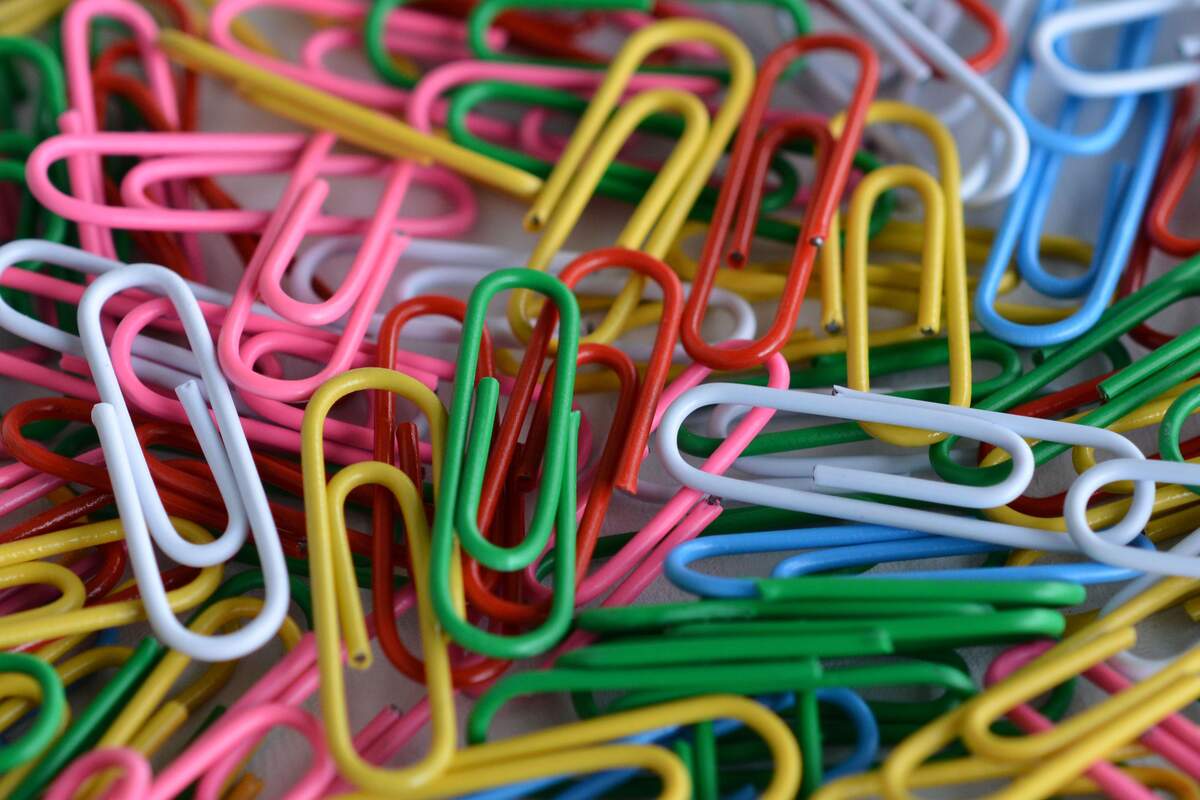

Paper Clip Day
Also known as
National Paper Clip Day
National Paperclip Day
Paperclip Day
Observed
annually on May 29th
Dates
Tags
Items & Things
Hashtags
Sources
Get ready to get your papers organized! It's Paper Clip Day! Paper clips (or paperclips) are flat pieces of metal that can hold papers in place without disturbing them and don't need to be bent or be pinched together to work. They gained in popularity at the end of the nineteenth century, when various types were created and many patents were applied for. This was at a time when steel was new, and the machines used to make large quantities of paper clips were invented.
Fastening papers together was first done in the thirteenth century. Short pieces of ribbon were put through parallel cuts that were made in the upper left-hand corners of paper. In 1835, John Ireland Howe, a New York physician, invented the machine for the mass production of straight pins. These pins were designed to be used with cloth, but people also used them to fasten paper together.
It wasn't until at least the 1860s when paper clips as we know them today began being made, and it wasn't until the 1890s that production really picked up. Many types of paper clips were made because many of the new designs had patents, so manufacturers had to make their designs unique. They often focused on certain aspects of the clips. For example, a manufacturer would focus on making paper clips that could hold a thick stack of papers, that would not tear the paper, or wouldn't get tangled with other paper clips.
In 1867, Samuel B. Fay invented a clip for attaching tickets to fabric. His patent mentioned that it could also be used to hold paper together. It was not used for this at the time, however, but in 1896 the "Cinch" paper clip debuted and used Fay's design. Fay's design was then sold under many names during the late 1890s. Other early paper clip patents include one by Erlman J. Wright in 1877 and one by Frank Angell in 1889.
Many see Johan Vaaler of Norway as the inventor of the paper clip. He created a paper clip made of a wire that had one turn in 1899. He patented it that year in Germany, as his home country of Norway didn't have patent laws at the time. He received an American patent for his invention two years later. A year after that, Cornelius J. Brosnan received an American patent for his "Konaclip" paper clip.
The paper clip we are most familiar with today, which has a double oval, is the "Gem" clip. Designed by Gem Manufacturing in England, it made its debut in 1892. It was never patented, but the machine used to make it was patented in 1899. There are countless other types of paper clips that have been made over the years. Some designs include the Non-Skid, Ideal, Owl, Eureka, Sheet Brass Gothic, Proco, Angell, Utility, Vice, Acme Correspondence, and Nifty.
Paper clips are often used for other reasons besides holding papers together. When the Nazi's occupied Norway during World War II, Norwegians weren't allowed to wear buttons that referred to their king on them. They decided to wear safety pins instead, in a nod to Johan Vaaler, who had invented a paper clip in their country in 1899. Paper clips have also been used as bookmarks, as hooks for ornaments, and much more.
How to Observe Paper Clip Day
Use paper clips whenever possible today! You could pick up a few boxes of different types of them and maybe could even find some in different colors. Make sure to put them on any pieces of paper you come into contact with. There are many other ways you could use them. Switch them out with all your bookmarks, use them in place of any broken zippers, use them as hooks on ornaments, and use them to clean out your glue bottles. You could also learn about more types of paper clips by perusing the paper clip timeline gallery at the bottom of the Early Office Museum webpage.





















